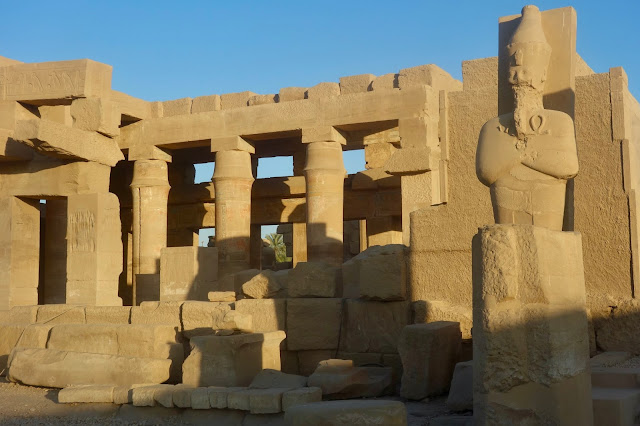I always thought Carnac the Magnificent was just a silly character that Johnny Carson did on "The Tonight Show" with Ed McMahon. Our arrival in Luxor, once known as Thebes and the capital of the ancient world, changed that ignorant notion. The late afternoon sun bathed Karnak Temple, one of the world's largest religious sites. Many pharaohs added their own stamps over hundreds of years.
During construction, Egyptians worked their way up by elevating themselves on temporary mud walls. And like most Egyptian temples, Karnak was built from the inside out. That's why this eroded mud wall remains behind the entrance.
A sacred lake, deep inside the Precinct of Mut, an early earth and creation deity, first marked the spot. You'd worship water too if you lived in a desert.
More than 100 columns supported the missing roof of the enormous Hypostyle Hall. Built on a north/south axis like all Egyptian temples, it reflects the centrality of the Nile in ancient culture.
Colorful paintings, protected from the relentless Saharan sun, remain along with deep carvings.
Obelisks and smaller temples, too.
Dozens of sphinxes vie with statues of Ramesses II for camera love.
If the pharoah's feet are wrapped, he's dead.
Left-food forward, his heart still beats. And I'm not being sexist. Few women ruled ancient Egypt. Cleopatra came much later, during Roman times.














No comments:
Post a Comment